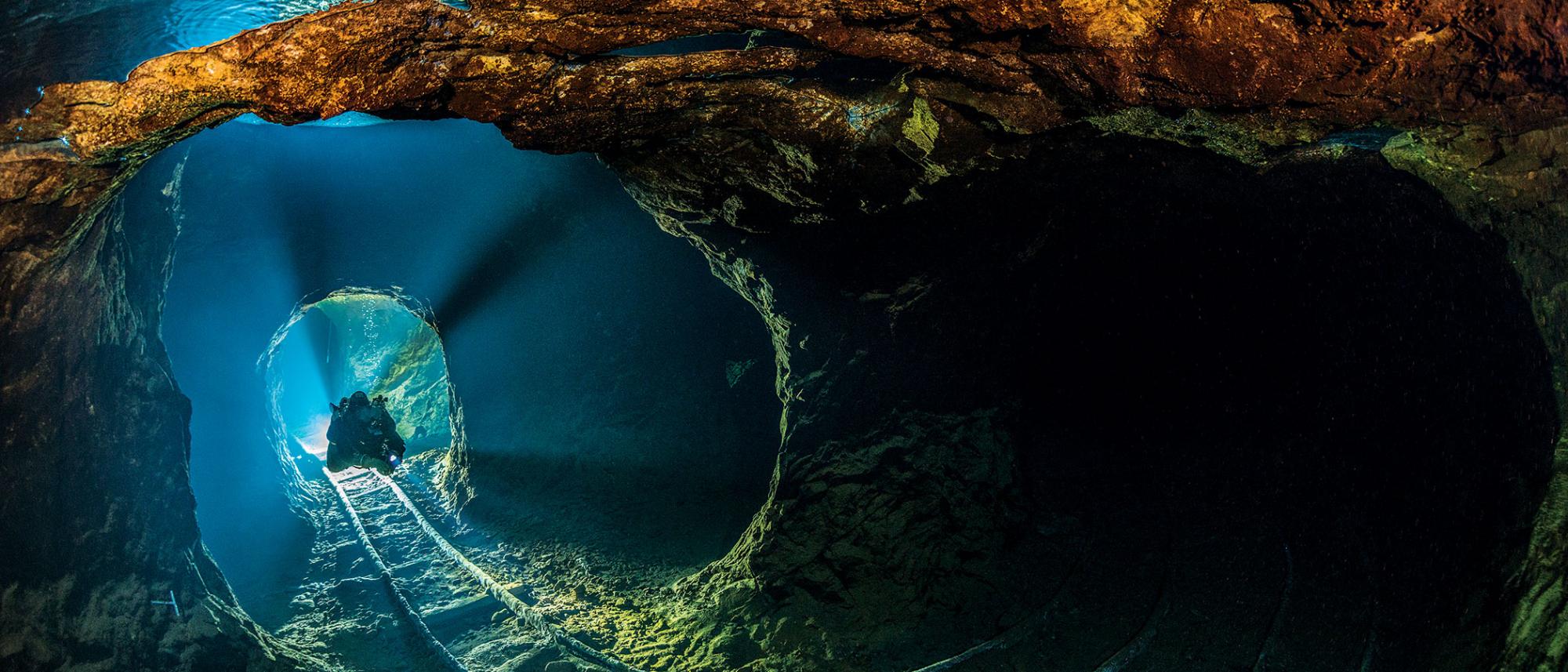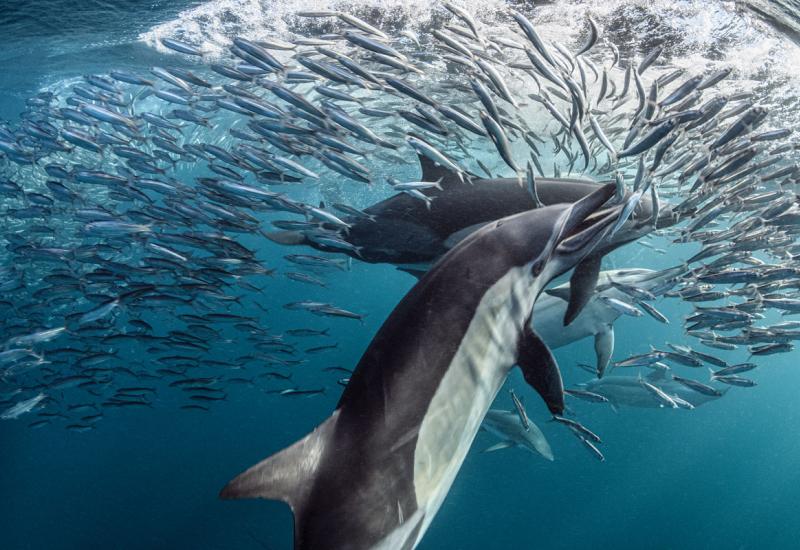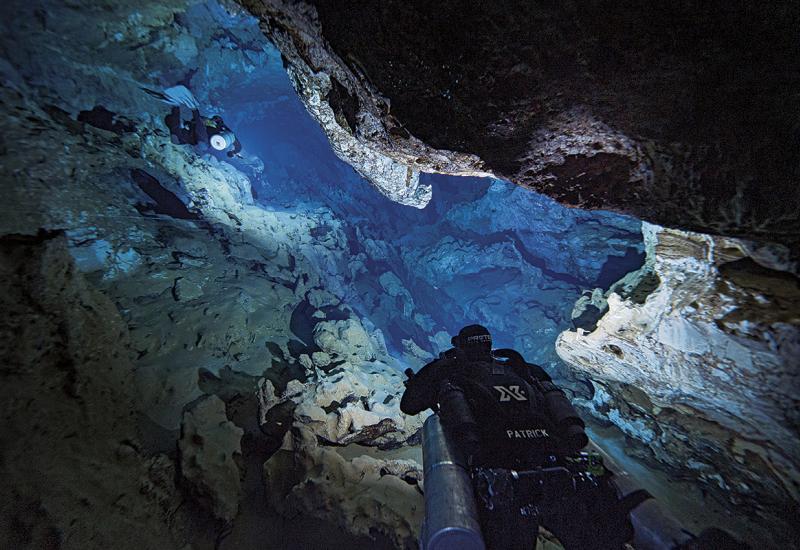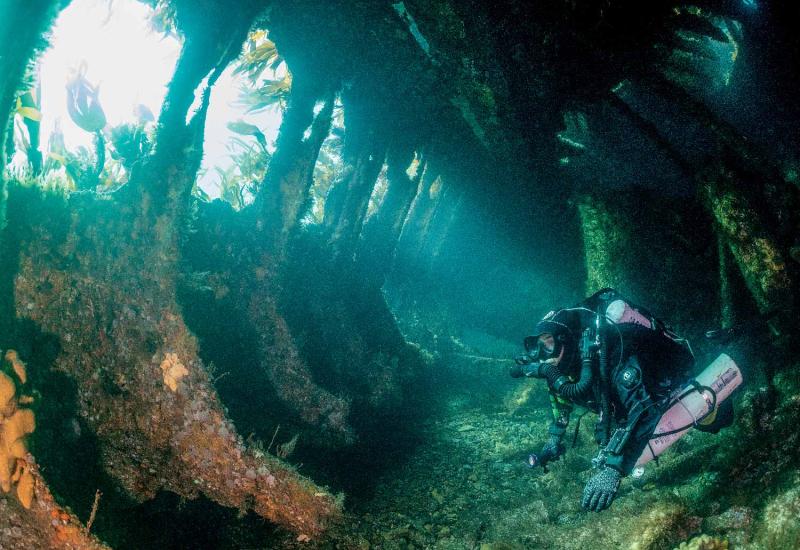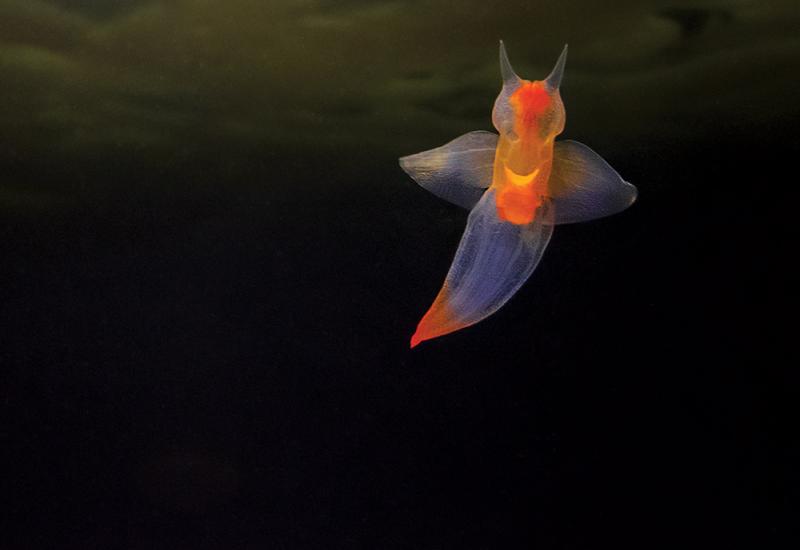Scuba Diving through Slovakia's Enchanting Opal Mines
The portal lies in a small meadow beneath a ripe deciduous forest. MILES of excavated tunnels lead from the dark below to the surface, ending at a number of entrances — some visited occasionally, others all but forgotten. Nowadays this one, called Jozef, is the only one still used as an entry to the underground.
All around, trees teem with fall colors. As a visitor enters, the atmosphere changes dramatically. Behind a thick wooden door, the pleasant warm breeze with the smell of fallen leaves is replaced by heavy, humid 39-degree-Fahrenheit air. Hundred-year-old nicks from miners’ mattocks are still visible on colorful walls. Divers pass through horizontal tunnels, carrying heavy equipment on their backs, following an experienced guide, shifting direction, changing shafts, entering another tunnel. Finally, a set of muddy stairs brings them to the lowest unflooded level. The entrance to the crystal-clear water is just around the corner. Without their guide, they would never find their way out.
The opal mines are located in eastern Slovakia near the city of Prešov, in the district of Červenica. Seventeen levels of tunnels, shafts and adits stretching more than 13 miles were manually excavated in the volcanic hills, some down to a depth of more than 150 yards. In 1922, the five lowest levels were flooded. The area today is a protected region of the country, and the mine itself is preserved for its mineral deposits. At its height, more than 350 workers and up to 13 grinders were employed here; today 16 species of bats are the only inhabitants of the cold, dark tunnels.
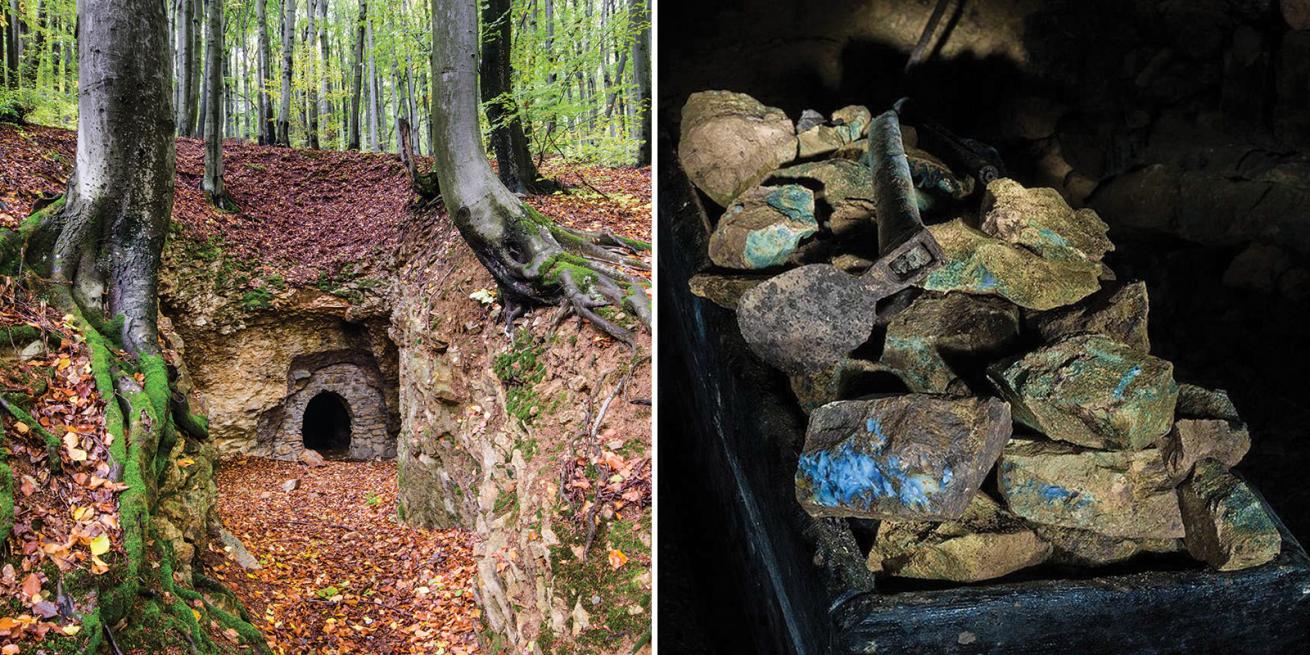
Martin StrmiskaAn unused entrance (left); ore with opals.
Deeply Desired
Unlike other gems, opals do not form crystals. Their amorphous silica structure diffracts light — deep inside itself, an opal contains the colors of all other gems at once.
The oldest mention of opals dates to the fifth century B.C., in a work by the Greek poet Onomacritos. Romans prized opals 200 years before the Christian era. Pliny the Elder — a Roman author, naturalist and naval commander who lived in the first century A.D. — wrote in his Historiae Naturalis Libri XXXVII that “to describe them is a matter of inexpressible difficulty, for there is amongst them the gentler fire of the ruby, the rich purple of the amethyst, the sea-green of the emerald, all shining together in an indescribable union.” According to Pliny, the Roman senator Nonius was so obsessed with his opal ring that he chose exile rather than surrender the ring to Emperor Marc Antony. Napoleon is said to have given a 700-carat black opal called “Burning of Troy” to the Empress Joséphine.
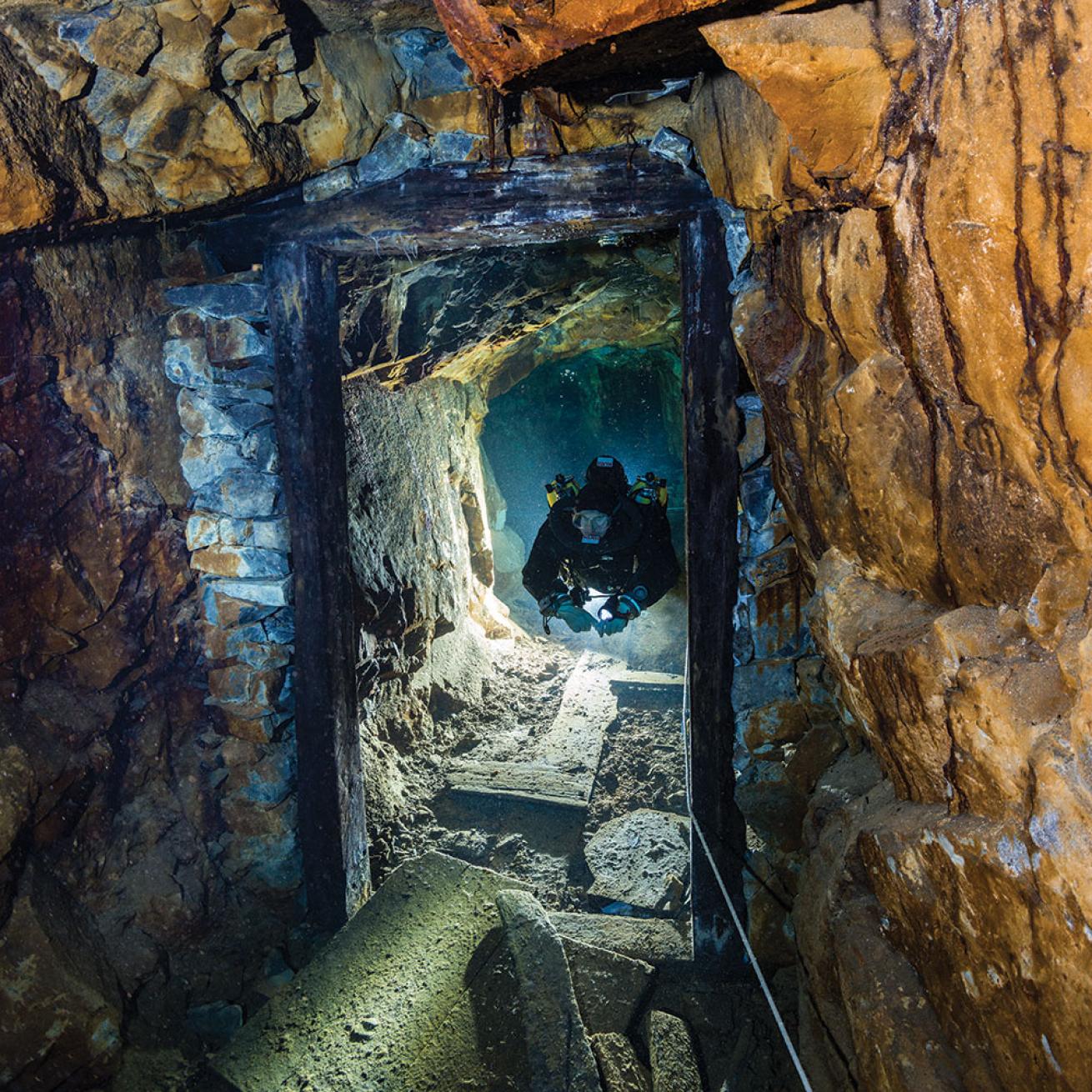
Martin StrmiskaA doorway leading deeper into the underworld.
Many of the better-known opals in history were mined in the Slanské Hills, until the early 19th century the only major opal mine in the world.
The first written mention of extracting opal gems in the Slanské Hills dates to 1597, but it was a Viennese jeweler who brought Slovak opals to the peak of their fame in the late 19th century.
Nowhere else in the world were opals mined on this scale. Around 150 years ago, about 25,000 carats a year were produced, as many as are mined in Australia today using a surface-mining method. The world’s largest opal — weighing 3,035 carats — was brought to light here 240 years ago. Its value is estimated at $500,000 USD; today the stone, which once was counted among the imperial jewels of the Austro-Hungarian empire, is held in the Natural History Museum of Vienna.
Diving into History
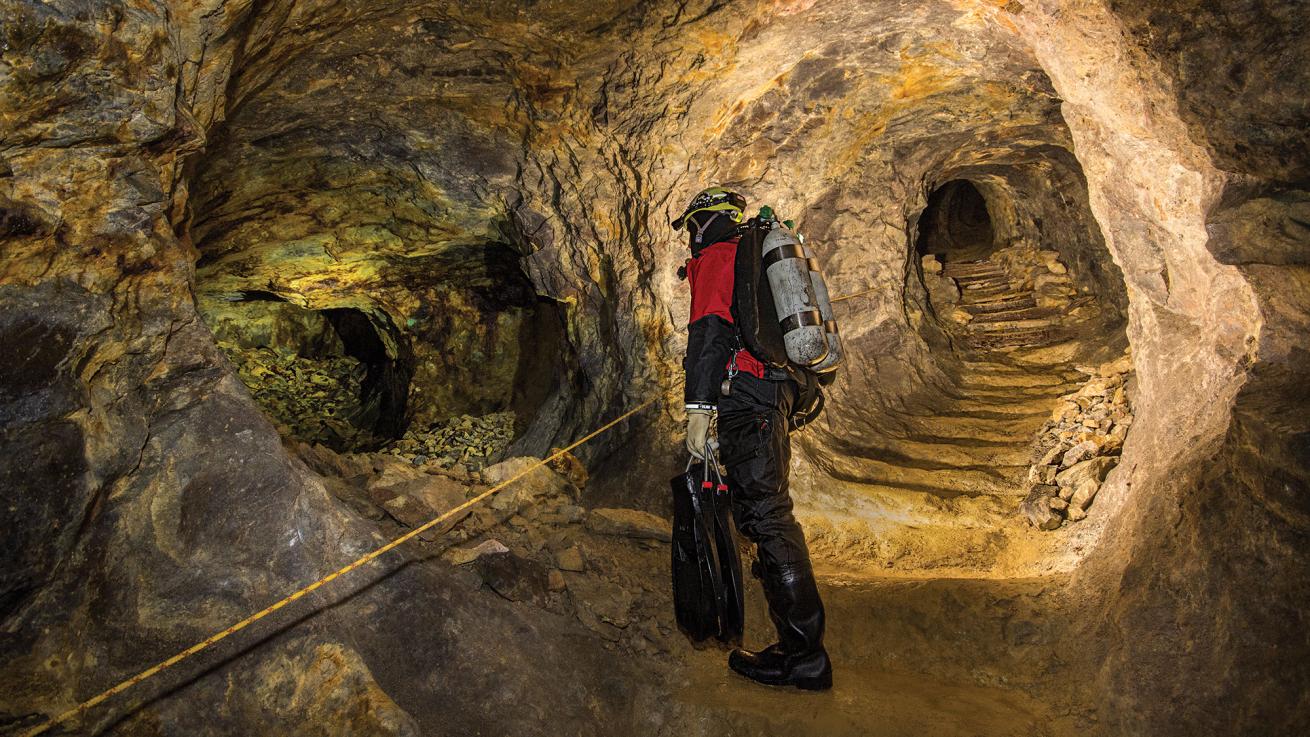
Martin StrmiskaDivers descend muddy stairs to access flooded tunnels.
Divers entering the mines warm up nicely carrying their heavy rigs and stages more than 40 vertical yards down to the small entry pool — the first splash of 39-degree water changes that. It takes a few fin kicks to pass through silty waters disturbed while kitting up; once the view opens, any thoughts of cold disappear, replaced by the pure pleasure of observing the most intense play of colors a cave diver can hope for, on walls covered in shades of purple, red, orange and white lining long tunnels filled with clear water.
Slovak gems are highly prized for their opalescence, or reflection of iridescent light. Here in the mine, the connection between the source and result is clear. As the predominant color changes dramatically from one room to another, it evokes the variations of color in an opal gem.
The lowest levels of the mine yielded the best opals. Throughout the endless corridors, traces of human effort remain — ladders, tracks, construction equipment. Here time stopped a hundred years ago. One can almost see the workers in 1918, leaving their tools as they exited for the day. But it’s the walls that attract the eye. Walls in dry parts of the mines have been contaminated for centuries by constantly dripping water containing various chemical compounds, but the acidic water in the flooded tunnels keeps the original view clear and untouched.
The color scheme is determined by the process of mineralization. Gravity allows rust stalactites to form on the ceiling, reaching from a few inches to nearly a yard in length. In some parts, the decoration looks just as rich as in limestone caves, but these limonite structures are fragile and collapse easily from just the touch of exhaled bubbles.
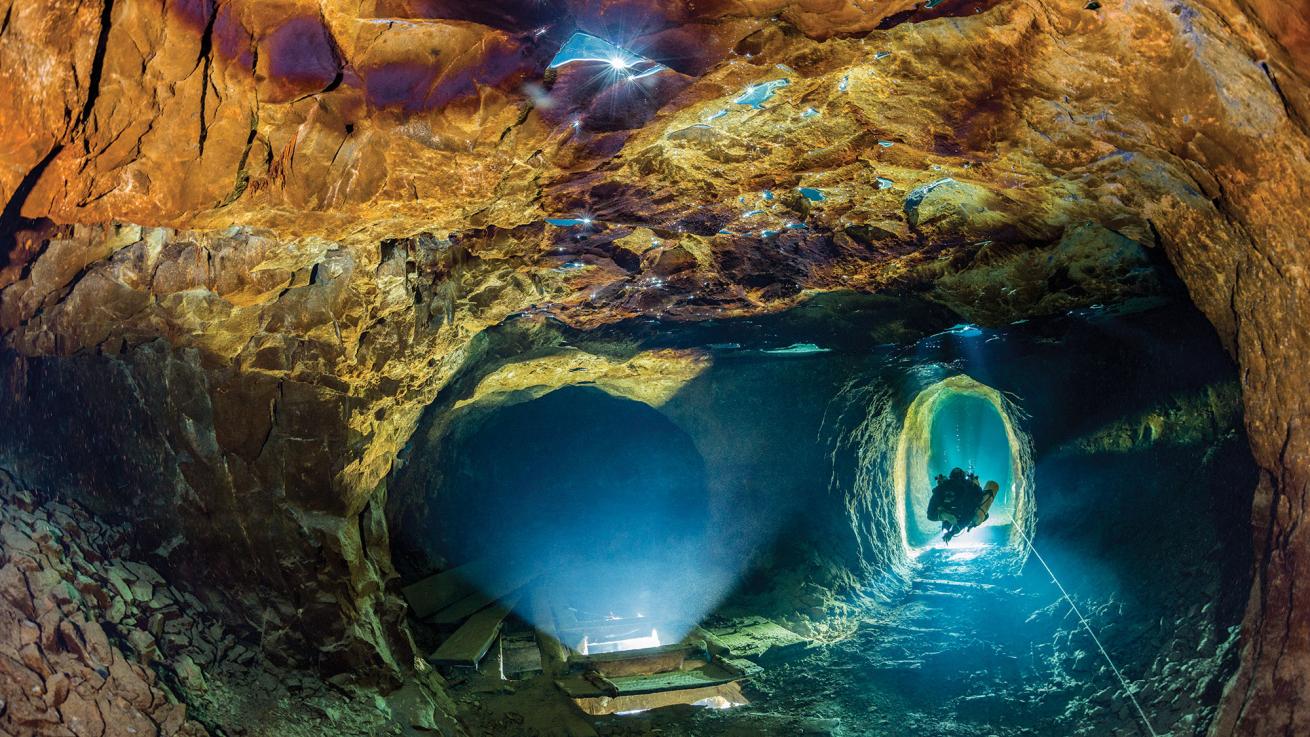
Martin StrmiskaGas trapped at the ceiling — colored by the minerals that create opals — makes beautiful reflections.
In some places, exhaled gas remains trapped at the ceiling, forming small capsules, some big enough to reflect light from a diver’s torch, creating a glistening sheet. When light sources are combined and the capsules move, the result is a play of light even more difficult to describe than the opal itself.
Over the decades, hundreds of tons of volcanic material were brought to the surface using railways; even more rubble was stored in unused tunnels. While the tunnel walls are stable, the artificial “walls” created by such material are a potential threat. When these collapse — and they occasionally do — rocks obstruct the tunnel, smother the guide line, and leave the diver in zero visibility.
The water in the tunnels is extremely cold, 37 to 41 degrees, and strongly mineralized, with a mildly acidic pH that emphasizes the cold. The main vertical mining shaft, called Fedö, connects two flooded floors, a sort of trachea of the lowest levels. Iron rails here are covered in a sheet of white mold. In some places, the rails connect and then disperse again in several directions. A white mist floats over the railways like a morning haze, disappearing in a black tunnel. You half expect miners pushing trolleys to show up any second. Although diving the mines can feel like exploring a cave, the fact that all of this was created by human hand can’t help but evoke memories of those who walked these corridors a long time ago.
Three Tips for Shooting
1) Have an external light source. Capturing attractive images requires an external source of light such as a powerful video light, triggered strobes, or a combination. The terrain makes it easy to hide a strobe behind a corner, or just behind a diver’s back. The best recipe for me is to first find a structured corner, nicely colored wall or an interesting object, and light it gently with on-camera strobes. Then aim a second, off-camera light at a diver. The trick is letting the off-camera light play the main role — the more the on-camera strobes are used to light the scene, the flatter the image will be.
2) Great buoyancy and orientation is critical. The tunnels are low and narrow. At the bottom there is a layer of super-fine sediment that often screws up a photo shoot before it even starts.
3) Make a plan. In most parts of the mine, narrow tunnels mean there is very limited communication possible. A detailed predive plan makes things much easier.
What It Takes
Divers must be in good physical condition. Carrying equipment down to the lowest level requires quite a bit of exertion. Headlamps are necessary for the walk through completely dark tunnels. Outfit yourself in the warmest undergarments you have, preferably with a heating system; good dry gloves are recommended. The slightly acidic, 37-to-41-degree-F water takes away any warmth very quickly. Bring a shoulder strap to carry your camera gear down the tunnels and stairs.
Need to Know
When To Go: The water temperature is stable throughout the year. During heavy rains, visibility can drop slightly, but in general, it’s great year-round.
Getting There: Budapest and Vienna are the closest international airports and are served by many major airlines flying from the U.S. Renting a car at the Budapest airport and driving 185 miles to the Slanské Hills is the best option.
Operator: Peter Kubička, a cave-diving and UTD instructor, is responsible for all diving activities at the mine. All dives are guided cave dives. Full cave certification is required, as well as a medical statement and dive insurance. Price Tag About $75 USD per dive.
Accommodations: Opal Guest House is located in the village of Zamutov, about 7 miles away. Be sure to book several months in advance.

